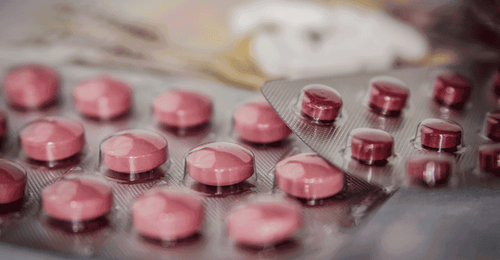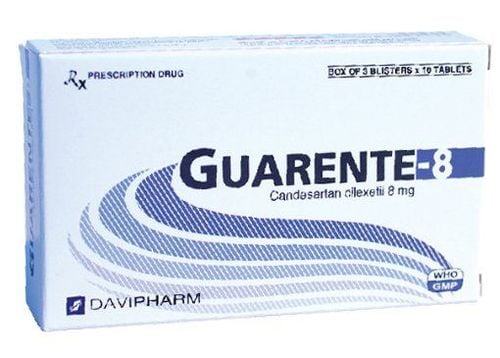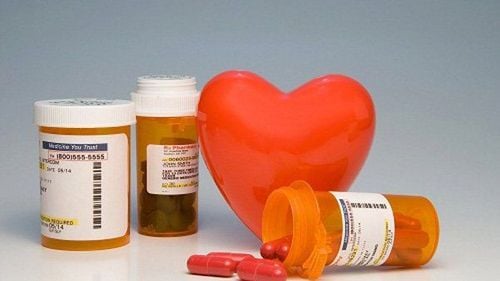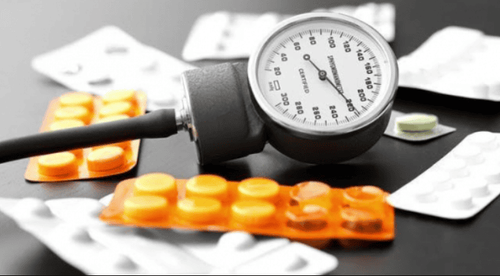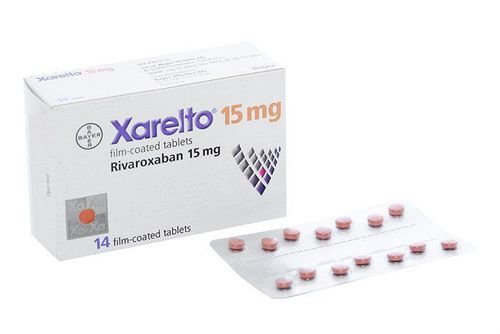This is an automatically translated article.
Atrial fibrillation is known to be one of the most common cardiac arrhythmias in the community, which can cause very serious complications that can lead to death or lifelong disability. So can atrial fibrillation be treated? What are the drugs to treat atrial fibrillation?
1. What is atrial fibrillation?
Atrial fibrillation is one of the most common arrhythmias, usually accounting for about 0.4 - 1.0% of arrhythmia cases in the community and most common in people over 80 years old with a rate of about 10%.
1.1. Diagnosis to confirm atrial fibrillation Usually based on routine 12-lead electrocardiogram:
Tingling waves called f-waves (fibrillation) appear instead when the P-wave disappears. These f-waves are for the isoelectric lines to become a rolling wave. The f-waves have the following characteristics: Irregular frequency ranging from about 300 to 600 ckmin. The f-waves vary widely in amplitude, shape, and duration. The f-waves can be clearly seen in the inferior leads (D2, D3, aVF) and right precordial leads (V1, V3R), but are often subtle in the left precordial leads (D1, aVl, V5, V6). ). The ventricular rhythm is very irregular in amplitude (the amplitude of the R wave varies from high to low) and very irregular in frequency (different lengths of RR intervals) without any pattern. It is an image of complete arrhythmia. The ventricular rate is slow or fast depending on the conduction of the AV node. The shape of the QRD is usually narrow, but in the same lead there can be slight differences in duration, amplitude, ... 1.2. Classification of atrial fibrillation Based on and clinical progression of atrial fibrillation can be divided into the following clinical types:
Paroxysmal atrial fibrillation: Atrial fibrillation usually lasts from 7 days back, the attack spontaneously returns to sinus rhythm. Persistent atrial fibrillation: Atrial fibrillation lasting for more than 7 days, atrial fibrillation can only be stopped when using cardioversion interventions. Chronic atrial fibrillation: Atrial fibrillation that persists for more than 1 year, and interventions cannot attempt to convert the rhythm. 1.3. Clinical symptoms of atrial fibrillation Symptoms most patients may experience on the day of onset of atrial fibrillation include: Lightheadedness, palpitations, dyspnea, sweating, chest pain. The heart rate can be irregular, sometimes slow, sometimes fast, sometimes weak, sometimes strong (complete arrhythmia). In real heart disease, symptoms such as coronary artery disease, valvular heart disease, and congenital heart disease can be detected.
2. Treatment in atrial fibrillation
2.1. Principles of treatment Helps control ventricular rate. Reduce the risk of embolism, prevent thrombosis. Helps to convert rhythm (atrial fibrillation to sinus rhythm) and maintain sinus rhythm. The aim of this treatment is to prevent stroke, improve symptoms, and reduce the number and length of hospital stays. There are some causes of atrial fibrillation that only need to be treated without the need for long-term treatment of atrial fibrillation such as myocarditis,... 2.2. Drugs to treat atrial fibrillation Control of ventricular rate: Usually to control the ventricular rate can be used with drugs that slow the conduction through the left atrial node such as:
Digitalis: Usually intravenous (Cedilanide, Isolanide 0, 4 mg IV 1⁄2 to 1 ampoule). In other non-emergency cases, Digoxin can be used as an oral dose of 0.25 mg (1 to 2 tablets per day), based on the specific response to adjust the dose accordingly. If electroconvulsive therapy is indicated for atrial fibrillation, discontinue Digitalis for at least a few days. Beta blockers: Can be taken orally or intravenously (Esmolol, Metoprolol). These agents are often chosen in patients with atrial fibrillation who have primary atrial fibrillation or coronary artery disease. Calcium channel blockers: Diltiazem or Verapamil are usually taken orally or intravenously. Intravenous formulations are otherwise rapidly acting and these agents have been evaluated to reduce overall response well. In the presence of obvious heart failure or left ventricular dysfunction, the use of this class of drugs is contraindicated. Prevention of embolism: Using anticoagulants to treat atrial fibrillation helps reduce the risk of ischemic stroke, but can cause intracranial hemorrhage and other dangerous types of bleeding.
Vitamin K Resistance: Is the drug of first choice. The goal of treatment to be achieved when using is to ensure an INR at 2 - 3. For patients under 65 years of age or with a contraindication to the use of Vitamin K antagonists, Aspirin can be used instead of an antiretroviral agent. Vitamin K under the prescription of a doctor. Aspirin is more effective when combined with clopidogrel, but the risk of bleeding is also increased compared with aspirin alone. Non-vitamin K oral anticoagulants (NOACs: Rivaroxaban, Dabigatran, Edoxaban and Apixaban) are also known as direct oral anticoagulants (DOACs), which are currently more recommended than vitamin K antagonists (Coumadin). and other drugs) in patients with nonvalvular atrial fibrillation. Patients with mechanical valve replacement or AF with moderate to severe mitral stenosis should be treated with Warfarin. In patients with atrial fibrillation without a mechanical valve, anticoagulation should be discontinued 1 week before major surgery with high bleeding risk without replacement with heparin. Cardioversion (atrial fibrillation to sinus rhythm) and maintenance of sinus rhythm:
Intravenous drugs: Aminodarone (usually administered intravenously mixed in saline or isotonic), Ibutilide (known as a new and very effective drug in the treatment of atrial fibrillation, a possible complication when using is torsades de pointes). Oral drugs: Procainamide and Amiodarone are both available in oral form, Amiodarone is the most commonly used drug, especially to help maintain sinus rhythm after cardioversion. Quinidine was the most commonly used drug in the past to help convert and maintain sinus rhythm. Sotalol is a class III drug but is effective in beta-blocking sympathomimetic. It can be used in patients with atrial fibrillation, but during administration it is necessary to pay attention to the side effects associated with beta-blockade and due to QT prolongation, which can cause torsades de pointes. Propafenone and Flecainide are class IC drugs that are effective in patients with atrial fibrillation. Disopyramide belongs to group IA, has similar effects to quinidine and procainamide, but this drug causes a lot of decrease in myocardial contractility and should not be used in patients with left ventricular dysfunction. 2.3. Other treatments Electroconvulsive cardioversion: It is a highly effective measure in converting atrial fibrillation to sinus rhythm and has a success rate of over 80%. This method is only performed when the patient has been adequately anticoagulated. Electroconvulsive shock should be performed in places with good cardiovascular monitoring and resuscitation capabilities in well-anesthetized patients. Permanent pacemaker placement: When the ventricular rate is slow or unresponsive to the above treatments, it may be indicated to use this method. Using catheter ablation of atrial fibrillation. Surgery (this method is only applicable at facilities with heart surgery centers): While performing other surgeries on patients (eg, bypass surgery, repair surgery in congenital heart disease, valve replacement surgery...) can perform surgery in the treatment of atrial fibrillation. In summary, there are many drugs to treat atrial fibrillation, depending on the severity of the disease and the patient's health condition, the dose will be different. Medicines to treat atrial fibrillation need to be prescribed by a doctor, and the patient must absolutely not buy and use them at home.
Please dial HOTLINE for more information or register for an appointment HERE. Download MyVinmec app to make appointments faster and to manage your bookings easily.




